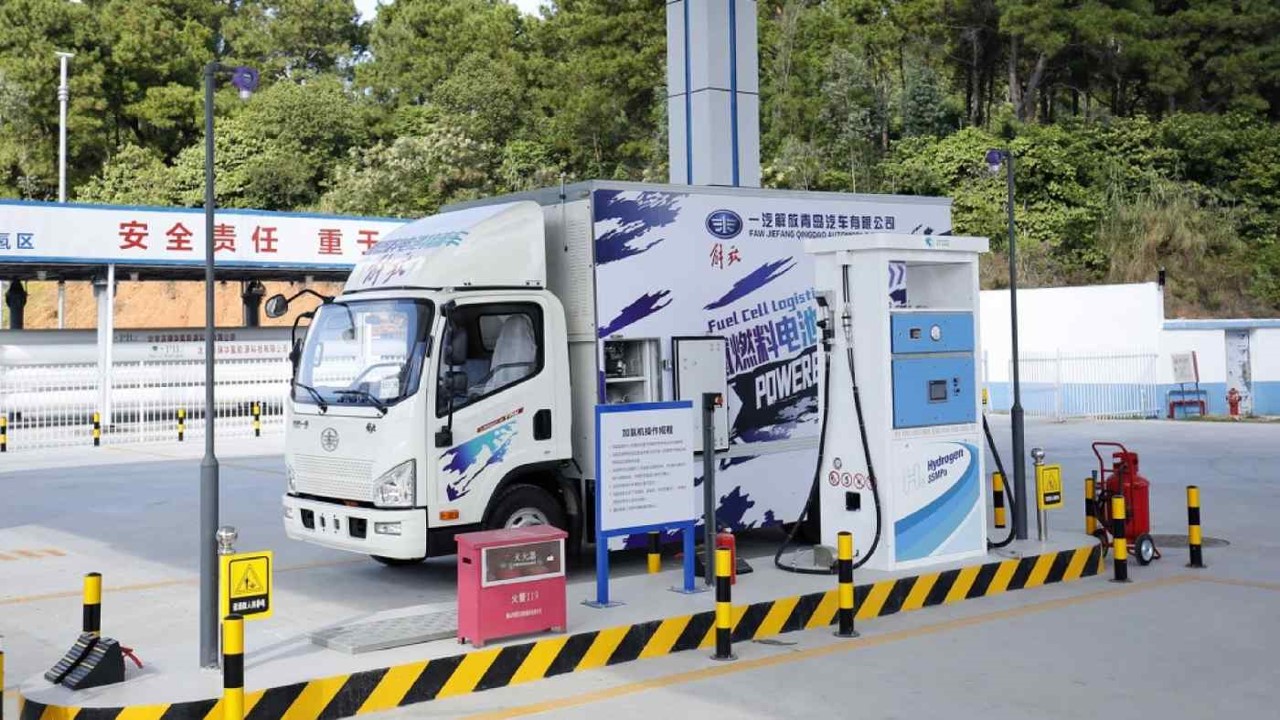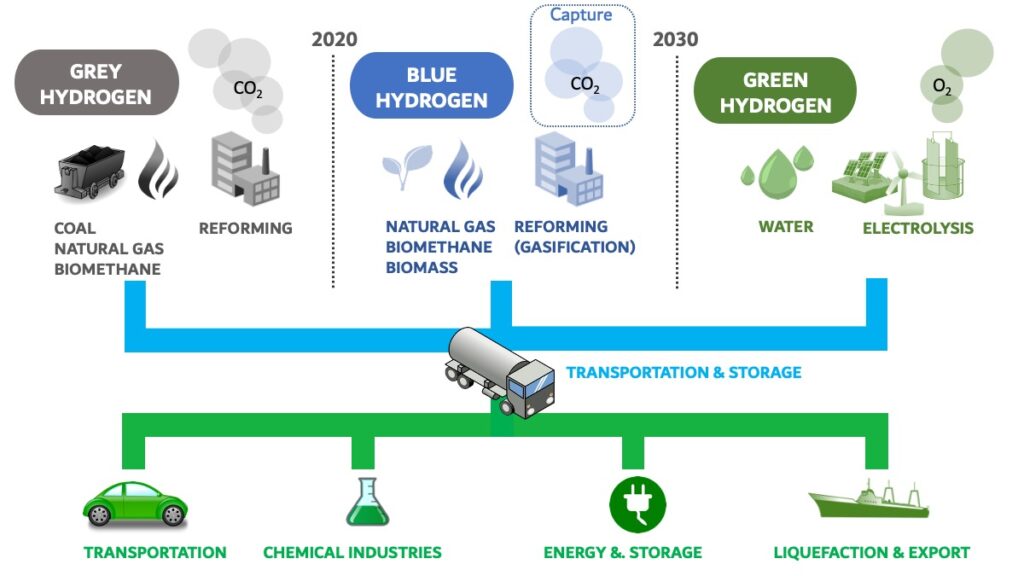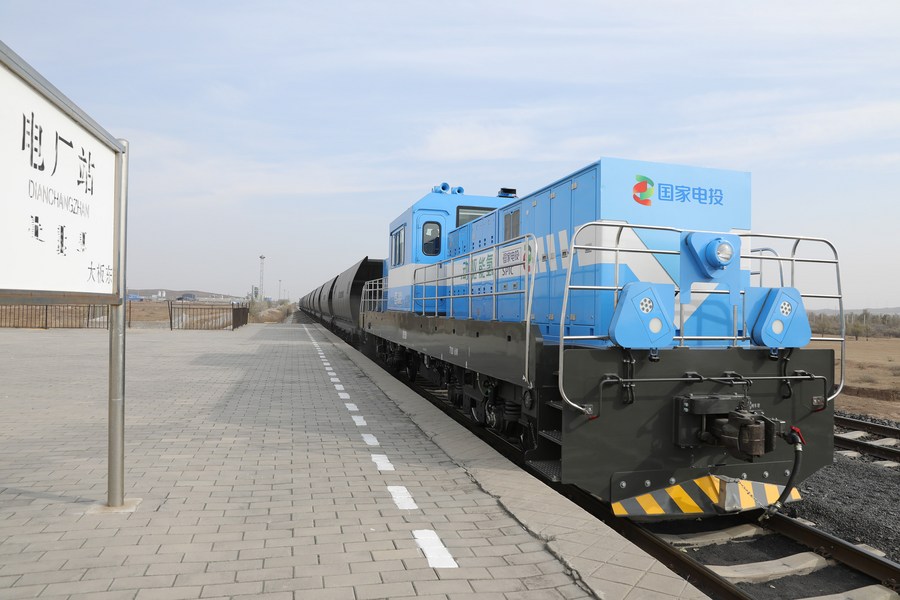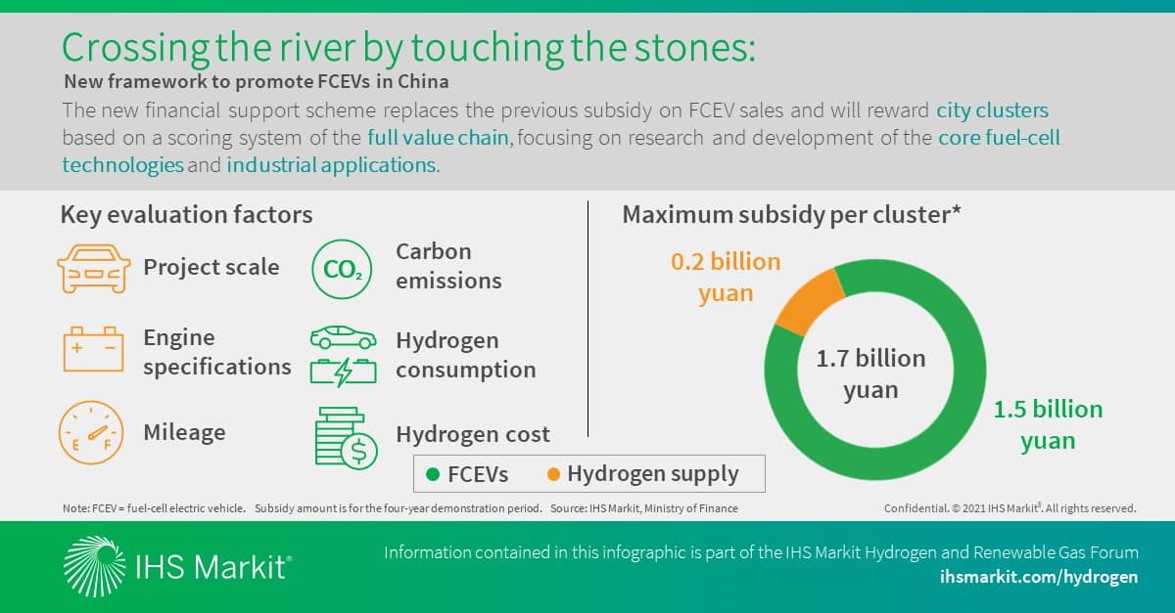
China unveiled Green Hydrogen Development Plan 2021-2035
China is the world’s largest producer and consumer of electric vehicles and has established a strong Electric Vehicles ecosystem in the country. The country is now looking to establish its supremacy in the hydrogen (H2) space. China is looking at hydrogen energy as a key component of its future national energy system.
China’s National Development and Reform Commission (NDRC) and National Energy Administration (NEA) unveiled the country’s first medium- to long-term (2021-2035) hydrogen development plan. The aim of the development plan is to systematically promote and guide the integrated, safe, and high-quality development of the hydrogen industry in China.
China sold around 3.52 million new energy vehicles in 2021 and is expecting to sell to 5 million in 2022. Similarly, the country produced 2,000 fuel-cell vehicles in 2021 and has already produced 356 fuel-cell vehicles during January-February 2022 (Source: China Association of Automobile Manufacturers). The country expects to reach carbon dioxide emissions to peak by 2030 and aims to achieve carbon neutrality by 2060.
There is a myth that hydrogen is always clean. Hydrogen is a secondary source of energy and it requires a primary energy input to be produced on an industrial scale. Hydrogen can be labeled differently depending on the source from which it is produced:

Gray: Derived from natural gas and produced from fossil fuels
Blue: Derived from natural gas through the process of steam methane reforming
Green: Produced in a climate-neutral manner that could reduce emissions.
China is currently the largest hydrogen producer in the world, producing 33 million tonnes annually. However, most of this production is gray hydrogen (60+% produced by coal gasification, 20+% produced by natural gas & industrial by-products, and green H2 currently only 1%). It is estimated that the production of hydrogen energy will be 43 million tonnes by 2030. Green hydrogen will increase contribute 10 percent by 2025. (Source: China Hydrogen Alliance). This will be mean replacing grey/black H2, energy storage, P2X and “green” steelmaking, “green” shipping/aviation, etc. – in line with energy security demands and industry policy-related goals.

The hydrogen industry in China is still in the early stage and the country is looking to promote high-quality, market-driven, and rational industry development through the coordinated market and infrastructure development, a platform to boost industrial innovation, core technology research, fiscal support, talent cultivation, pilot projects, etc. China is also looking to promote international cooperation through dialogues, joint R&D, innovation cooperation, hydrogen energy trade, etc.
The key targets under the hydrogen development plan are:
2025: to produce 100,000 to 200,000 tonnes of green hydrogen a year and have about 50,000 hydrogen-fuelled vehicles by 2025, enabling carbon dioxide emission reduction of 1 million to 2 million tonnes per year
2025: to establish a relatively complete system and policy environment for hydrogen energy industry development will be formed by 2025
2030: to build a complete technology innovation system for hydrogen and bolster production and supplies of clean hydrogen by 2030, including industrial innovation capability, core technologies
2035: to form a diverse hydrogen energy application ecosystem covering transportation, energy storage, industry, and other fields to increase the proportion of green hydrogen in the final energy consumption
The policy is looking to promote demonstration applications in the transportation field in an orderly manner. Initially, the government will focus on promoting the application of hydrogen fuel cells in medium and heavy vehicles and shift to new energy passenger and cargo vehicles later. Further the goal is to explore the application of fuel cells in ships, aircraft, and other fields, as well as promote the research and development of large fuel-cell aircraft.
The government is shifting subsidies and inventive from electric vehicles to hydrogen vehicles. In 2021, China announced a new subsidy package for the value chains of automobiles powered by hydrogen fuel cells around Beijing, Shanghai, and Guangdong. There are more than 300 companies that are part of the hydrogen supply chain system. Under the plan, each of the metropolitan areas can receive up to $235 million (¥1.5 billion) for fuel-cell vehicles and $31 million (¥200 million) for hydrogen supply during a four-year demonstration period. Many cities are looking to build their stronghold in hydrogen market:
Beijing: aims to have 5 to 8 hydrogen energy enterprises with international influence by 2023.
Shanghai: plans to have nearly 100 hydrogen stations and 10,000 vehicles powered by hydrogen fuel cells by 2023
Guangdong: targets 300 hydrogen stations planned for the Pearl River Delta and its coastal economic belt



